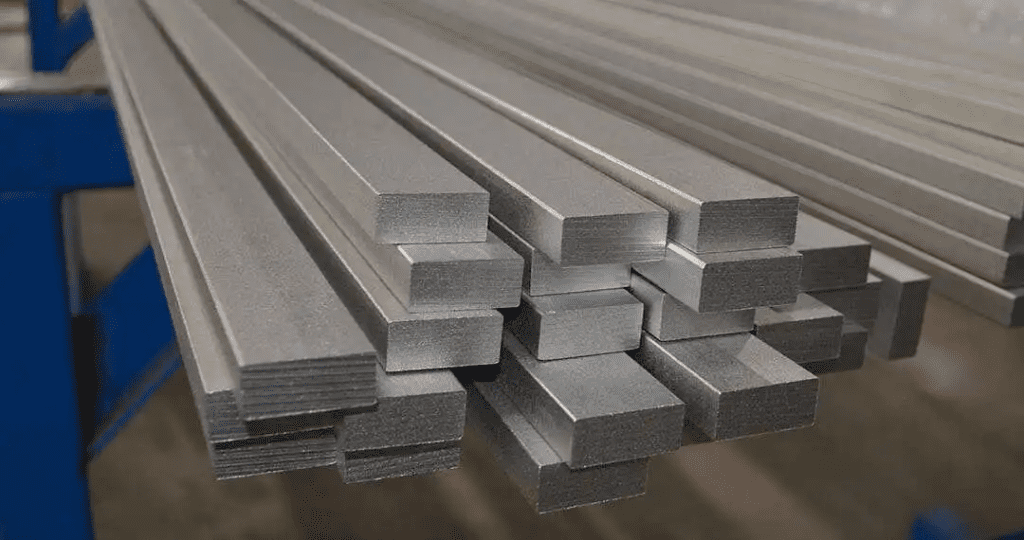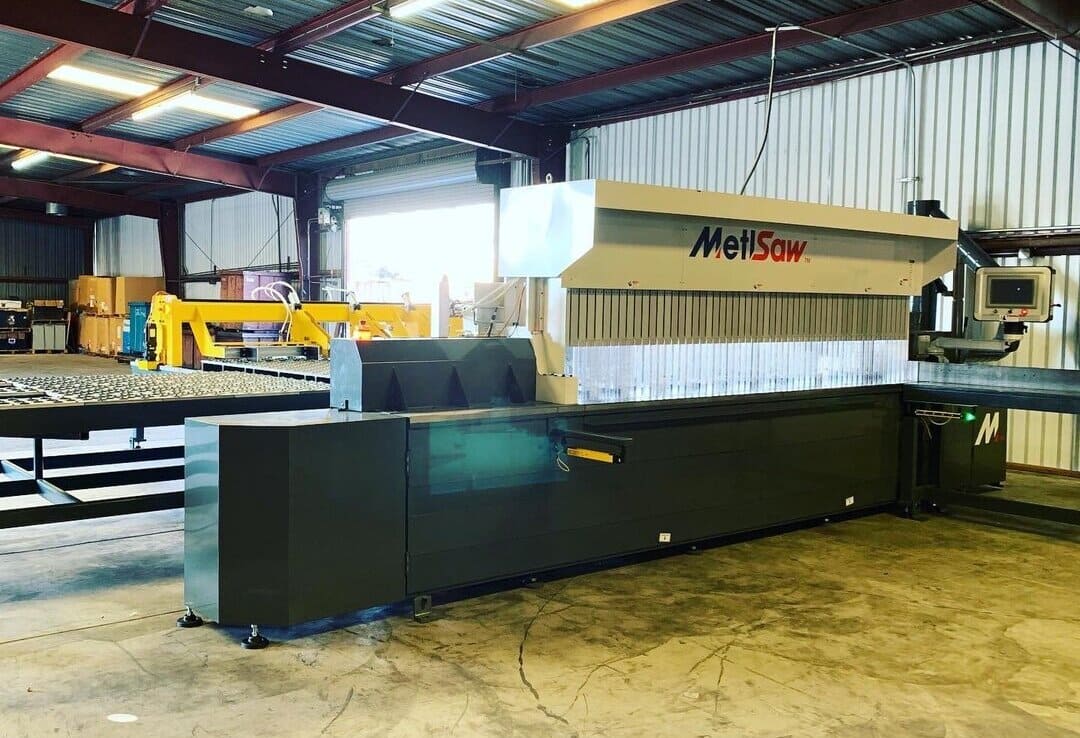The most common way to cut metal is with a Sawzall, a bimetal blade, and enthusiasm. This is, however, far from the best way to cut metal.
The resulting cuts are typically anything but straight, and if the metal is thicker than a nail or sheet metal, cutting through it with a Sawzall will take a substantial amount of time.
The angle grinder is a better choice for cutting sheet metal for construction, welding, or machining. Equipped with an abrasive cutting disc rather than a grind or polish disc, they can make straight, clean cuts.
However, cutting through anything thicker than a typical angle iron is likely time-consuming and exhausting. The best way to cut sheet metal depends on the type of metal, dimensions, and end-use case.
Types of Metal Cutting Processes
Cutting metal is an essential part of manufacturing and fabrication, involving various tools and technologies to achieve precise and efficient results. Choosing the right cutting process is crucial for the desired outcome, whether working with thin metal or thick steel.
This guide explores the two main categories of metal cutting processes. It highlights the best methods and tools, including tin snips, bolt cutters, precision metal cutting techniques, and power tools, such as angle grinders and plasma cutters.
Mechanical Cutting Processes
The mechanical process involves direct contact between the metal and a metal cutting blade or an abrasive surface. These include a variety of saws, such as those with specialized saw blades, and even processes, such as water jet cutting.
Mechanical cutting processes are common in both small and large shops and are often the best way to cut metal for professional work. Tools like tin snips and bolt cutters are excellent for cutting thin metal, while power tools like angle grinders offer versatility for more advanced applications.
While friction and the resulting heat input can be an issue, heavy machining oils can prevent damage to the metal.
Nonphysical Cutting Processes
These are less common than strictly mechanical processes; many are new or nascent technologies. In these processes, thermal or electrical energy is directed into the metal, melting through it and leaving two separate pieces behind.
This category includes precision metal cutting techniques like laser and plasma cutting. Although laser cutting could, in principle, be used to cut large industrial metal pieces precisely, its most common application is precisely cutting ornamental work, such as lettering for custom signs. Plasma cutters, on the other hand, are versatile tools that can cut through various metal thicknesses efficiently.
Best Metal Cutting Tools and Methods
In either type of cutting process, the best way to cut metal will vary on a case-by-case basis. For example, overheating the metal, changing its properties, and rendering it unfit for purpose is possible whether one is working with mechanical or electro-thermal cutting processes.
Using the right tool, such as circular saw blades designed for metal or power tools, such as an angle grinder, is crucial. The best way to cut metal depends on the parameters for the metal, the process, and the desired result, ensuring efficiency, precision, and safety in every project.
|
Buy Certified High-Quality Metals for Industrial Solutions |
||
|
New Aluminum |
New Steel |
New Stainless Steel |
 |
 |
 |
| Reliable supply: Consistent, certified aluminum stock you can trust. High-quality material: Superior-grade aluminum for precision needs. Custom cuts: Accurate cuts down to thousandths of an inch. |
Durability and strength: Reliable for projects needing long-lasting, tough materials. Cost-effective: Quality steel that offers strength without breaking the bank. Custom cutting: Precise cuts tailored to exact needs with top-tier cutting tools. |
Sustainability: Highly eco-friendly as the most recyclable metal on earth. High durability: Resistant to corrosion and wear, ensuring long-lasting performance. Custom precision cuts: Tailored to your specifications with quick, accurate results. |
Mechanical Metal Cutting Processes

Cutting metal mechanically is something that everyone has done. If you have used a can opener, you have successfully cut metal mechanically. Doing so in a professional setting requires more in the way of equipment. This can be as simple as using common wood-cutting tools equipped with carbide metal cutting blades.
Types of Metal Cutting Tool
The following table shows how to cut metal with different types of metal tools one can use today:
| Type of Tool | Features |
| Band Saws | A band saw uses a toothed metal belt drawn between two pulleys as its metal cutting blade. They come in models where the blade runs vertically and horizontally. They also come in both fixed and portable models. Getting a straight cut from a portable bandsaw takes a lot of practice. |
| Circular Saw | These are basic saws equipped with toothed disc saws. When the disc has carbide-cemented teeth, it is capable of cutting softer metals like aluminum accurately and effectively. |
| Table Saws | Work on the same basic premise as circular saws using a toothed disc as a blade. The difference is that the blade is embedded into a tabletop, and the material to be cut is moved instead of the saw. |
| Track Saws | These are essentially beefier circular saws with vacuum attachments that suck up the dust generated by the saw. This keeps the saw and cut clear of debris, allowing for easier and more effective cutting. It also has the benefit of collecting metal shavings for recycling. |
| Vacuum Saws | These are essentially beefier circular saws with vacuum attachments that suck up the dust generated by the saw. This keeps the saw and cut clear of debris, allowing for easier and more effective cutting. It also has the benefit of collecting metal shavings for recycling. |
| Water Jet Cutter | A water jet cutter uses a high-pressure jet of water to cut through materials. This can be pure water, or it can be water and an abrasive. The big advantage of this process is that it can cut through very thick materials cleanly and with a high degree of accuracy without much risk of damaging the metal through heat input. |
Any of these metal cutting tools provides a practical way to cut softer metals, like aluminum, and can be considered the best way to cut metal, depending on the metal and use case. However, this methodology may not provide the necessary speed for a small shop that must cut lots of aluminum.
These saws are also not viable for cutting harder metals in significant amounts. Adding a hacksaw blade to a band saw can help with smaller, detailed cuts, but it might not be the most efficient method for larger projects.
While adding an abrasive blade to a circular saw and cutting steel is technically feasible—and many have tried to do this—the results are likely frightening and hazardous to the operator. Cutting steel and harder metals requires upgrading metal-cutting processes to the next level.
Electrical and Thermal Methods of Cutting Metal

Heat is humanity’s oldest means of working with metal, and it is still one of the preferred methods of cutting metal. Oxy-acetylene cutting torches are a common metal cutting tool in shops and construction sites the world over.
They are handy for cutting pieces of rebar and steel plates in an environment where options are limited. However, they aren’t typically used for precision cuts, and typically there is a fair amount of grinding metal after cutting in order to clean up the cuts so the metal can be used.
Various improvements have been made to this basic flammable gas metal cutting setup. These include:
- Replacing acetylene with a different, hotter burning gas
- Mechanical controls for more precise and cleaner cuts
However, this may not be acceptable for some uses as it generates large heat-affected zones. It also does not work very well with metals, such as aluminum, which tends to bond with oxygen in the atmosphere when heated. This has led to the development of plasma cutting and laser metal cutting tools.
These very high-heat metal cutting processes lead to less heat input into the metal because they cut through metal so quickly.
Due to either a shielding gas in the case of plasma cutters or the ability to cut through the metal very quickly, these cutting methods are very capable of cutting through materials like aluminum without the issues that occur with gas-cutting processes.
Reducing Equipment Damage and Miscut Metals
The best way to cut metal depends on the workflow and the needs of the final product. Top-tier laser and plasma cutters won’t be of much use if they’re paired with an operator who cuts with the distinctive wobble that comes from being inexperienced.
Pairing plasma and laser cutting with CNC metal cutting tools will address this issue, but it is probably overkill for most metalworking shops. While small-scale CNC cutters are fairly affordable, industrial versions that deal with inches-thick metal and higher are costly.
The same holds true for many mechanical cutting methods. While these upfront costs are lower than those of plasma or laser cutters, specialized carbide blades and high-powered saws aren’t cheap. This is especially true for those with the power and specialized setups needed for thicker materials or high-volume production.
Training employees to use this equipment and developing suitable parameters is likely to be quite expensive in terms of equipment damage and miscut metals. It might not be obvious that machining oils are required, and an inexperienced employee is unlikely to know the right cutting oil for machining aluminum vs. what is suitable for hardened steel. They also aren’t well adapted to specialized shapes like circles.
Precision Metal Cutting and Speedy Delivery From Industrial Metal Services
The lesson is that the best way to cut metal for most, whether hobbyists or metal production shops, is to use expert industrial metal-cutting services. These can deliver process-ready metals ready for final assembly or machining to your door. It doesn’t matter if you want to cut or order aluminum, titanium, or other hard metals. Our professional metal cutting will save you both time and money.
Industrial Metal Services stands out in the metal-cutting industry by offering unparalleled speed of delivery, ensuring that your materials are processed and out the door in just three days. Our commitment to convenience extends to being locally open on Saturdays, allowing you to pick up your orders at your convenience.
Trust us to provide the high-quality, efficient service you need to keep your projects on track.
 Angle
Angle Cast Plate
Cast Plate Diamond Plate
Diamond Plate Flat Bar
Flat Bar Plate
Plate Round Bar
Round Bar Square Bar
Square Bar Square Tubing
Square Tubing Round Tubing
Round Tubing Angle
Angle Channel
Channel Diamond Plate
Diamond Plate I Beam
I Beam Round Bar
Round Bar Sheet
Sheet Square tubing
Square tubing Round Tubing
Round Tubing Rectangular Tubing
Rectangular Tubing Plate
Plate Rectangular Bar
Rectangular Bar Rectangular Tubing
Rectangular Tubing Round Bar
Round Bar Sheet
Sheet Square Bar
Square Bar Square Tubing
Square Tubing
